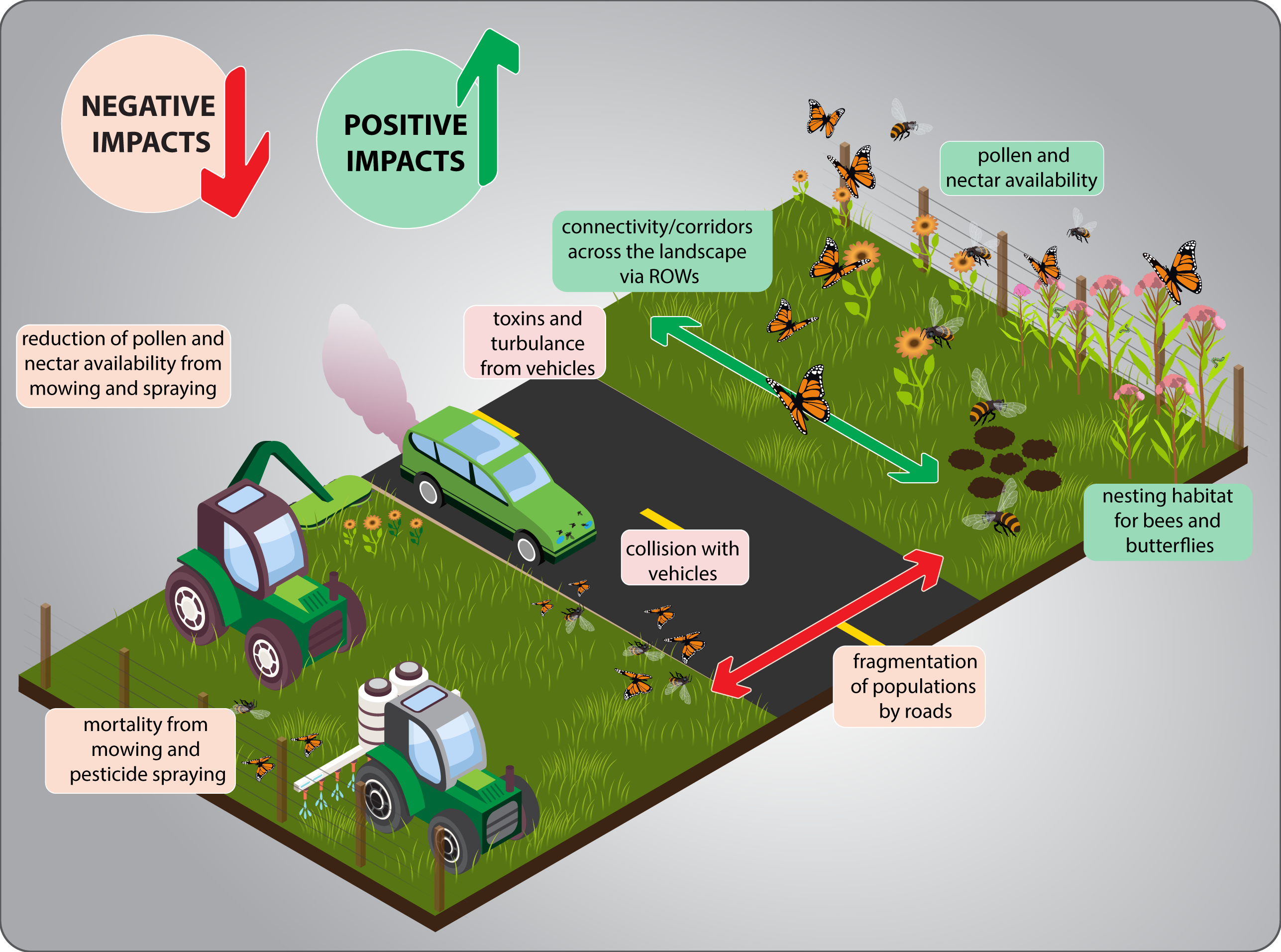 The monarch butterfly population has declined drastically in western states since the 1980s, largely due to habitat loss and fragmentation. In Idaho, the Snake River Plain is a target location for conservation and restoration activities. ITD manages a large number of highway miles and adjacent right of way (ROW) acreage in this region, but there is little data on the amount of land or the specific locations that support butterfly populations, migration routes, and breeding habitat.
The monarch butterfly population has declined drastically in western states since the 1980s, largely due to habitat loss and fragmentation. In Idaho, the Snake River Plain is a target location for conservation and restoration activities. ITD manages a large number of highway miles and adjacent right of way (ROW) acreage in this region, but there is little data on the amount of land or the specific locations that support butterfly populations, migration routes, and breeding habitat.
For this project, researchers from the Montana State University (MSU) Ecology Department and WTI’s Road Ecology program will conduct a field study to identify the amount and location of existing monarch butterfly habitat within ITD ROW land, as well as additional locations that could be easily restored to suitable habitat. Monarchs and their host plants, milkweeds, are a key focus of the project, and it will also evaluate several other native butterflies and bee species that are of high conservation concern. From the findings, the research team will develop recommendations for ITD on how to manage roadsides that connect natural areas and conserve butterfly and bee populations. The research will be led by Dr. Diane Debiniski (MSU Ecology), in partnership with Rob Ament (WTI) and Dr. Laura Burkle (MSU Ecology).
The objectives of this project are to:
PERSONNEL:
REPORTS & DOCUMENTS:
RELATED WORK:
© 2024 Western Transportation Institute – all rights reserved. PO Box 174250, Bozeman, MT 59717